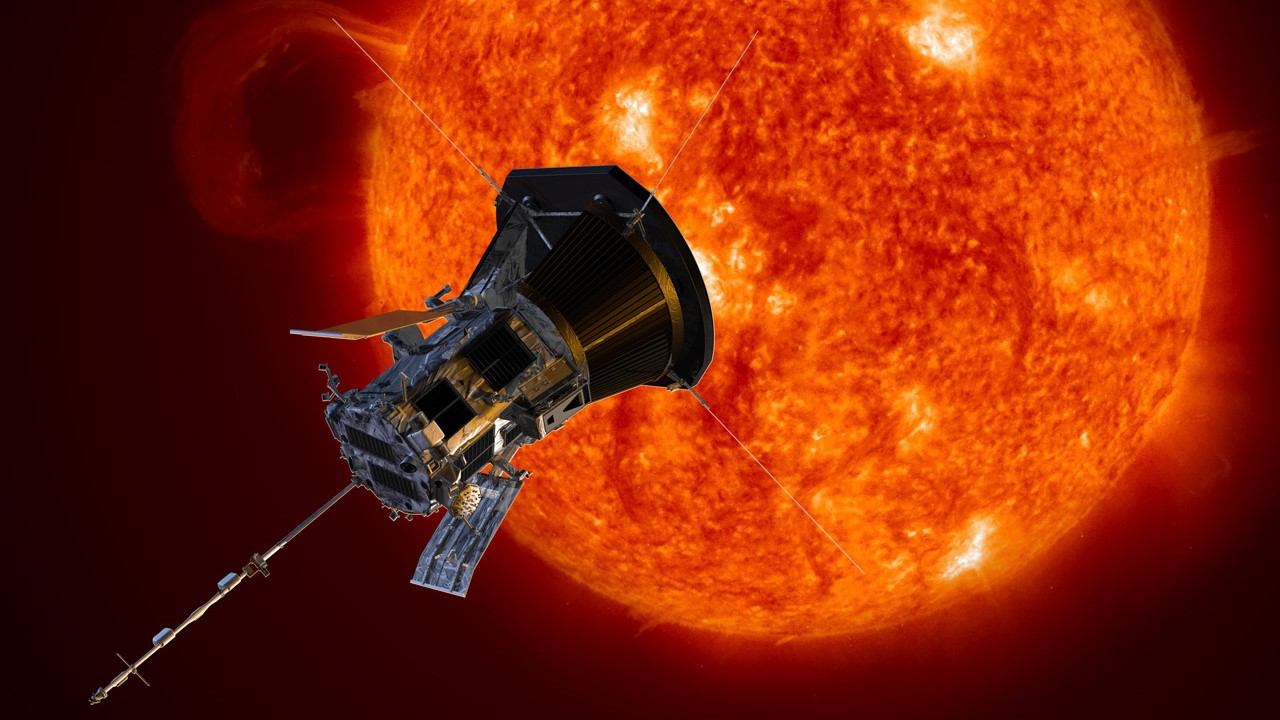
On New Year's Day, NASA's Parker Solar Probe added to the festive cheer by sending home more good news about its record-breaking closest-ever approach to the sun.
On Wednesday (Jan. 1), mission control at Johns Hopkins University's Applied Physics Laboratory in Maryland began receiving the Parker Solar Probe's first telemetry — or housekeeping data — that confirms Parker's systems and science instruments are "healthy and operating normally" after its historic rendezvous with the sun, NASA shared in an update on Thursday (Jan. 2).
"All is looking good with the spacecraft systems and instrument operations," Michael Buckley, a spokesperson at JHUAPL, which oversees the Parker Solar Probe mission, told Space.com in an email. "It really is a remarkable spacecraft!"
The latest telemetry transmission also confirms the Parker Solar Probe successfully carried out the commands programmed into its flight computers and that its science instruments were functioning during the flyby, according to the statement. That means the spacecraft collected valuable data about our star as it swooped to within 3.8 million miles (6.1 million kilometers) of the sun's surface — the closest yet a spacecraft has ever gotten to our star.
"While Parker Solar Probe was closer to the sun than any other human-made object in history, it operated just as it was designed to do, and made observations that no one has been able to make before," Helene Winters, the program manager for the Parker Solar Probe mission at JHUAPL, said in the statement.
On Dec. 26, Parker Solar Probe signaled Earth to report it survived its record-breaking flyby of the Sun on Dec. 24. New transmissions received on Jan. 1 give more details, confirming the spacecraft collected data during the flyby, and more: https://t.co/FzGCGTXjhoJanuary 2, 2025
The telemetry transmission, which mission control is receiving through NASA's Deep Space Network, continues through Thursday, Buckley said. The probe should beam home its collected science data later this month, when its most powerful onboard antenna will be in better alignment with Earth to transmit at higher rates.
"The data that will come down from the spacecraft will be fresh information about a place that we, as humanity, have never been," Joe Westlake, the director of the Heliophysics Division at NASA Headquarters in Washington, said in a Dec. 27 update. "It's an amazing accomplishment."
On Christmas Eve, the Parker Solar Probe hurtled through the scorching solar atmosphere while traveling at a maximum speed of 430,000 miles per hour (690,000 kilometers per hour) — fast enough to travel from Tokyo to Washington, D.C. within a minute — breaking its own record as the fastest object ever built.
Scientists were out of contact with the probe during the rendezvous, and just before midnight on Dec. 26, they received a simple yet much-anticipated beacon tone indicating the spacecraft survived the encounter and is operating normally. Thanks to a custom, 4.5-inch-thick (11.4-centimeter-thick) heat shield, the spacecraft could successfully endure temperatures up to 1,800 degrees Fahrenheit (982 degrees Celsius), NASA previously said.
Signal Received. 📡NASA's #ParkerSolarProbe made history with its closest pass to the Sun—3.8M miles at 430,000 mph. A signal received at APL confirms the probe is healthy & operating normally. Telemetry data expected Jan. 1. https://t.co/x0RIfx4clc @NASASun @NASASolarSystemDecember 27, 2024
Scientists hope data from Parker will help them decode longstanding mysteries about our sun, such as why its tenuous outer atmosphere, the corona, gets hundreds of times hotter the farther it stretches from the sun's surface.
"The data is so important for the science community because it gives us another vantage point," Kelly Korreck, a heliophysicist at NASA Headquarters who worked on one of the mission's instruments, said in the statement. "By getting firsthand accounts of what's happening in the solar atmosphere, Parker Solar Probe has revolutionized our understanding of the sun."
The spacecraft is scheduled for two more flybys in 2025 at approximately the same speed and distance from the sun — on March 22 and June 19.







